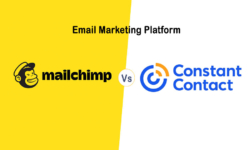In the business world, customer connections are critical. It’s not enough to create brand awareness and plaster your logo everywhere. Connections with the customers you’re trying to reach are essential if you want actual returns from investment and not just brand awareness.
So how do you connect with customers? By using good, old-fashioned print marketing.
Contrary to popular projections, print marketing hasn’t gone away. In fact, magazine advertising spend in North America reached $9.1 billion in 2021, and spend for direct mail marketing in the UK reached $1.1 billion (£910 million) in 2020.
Print marketing is still a major aspect of marketing strategies and should be part of your marketing toolkit.
Here are 10 ways print marketing can help you connect with your customers.
1. Boost Local Advertising Returns
Producing enough mailers to send to the entire country is costly and a waste of your resources. Mailers, however, still get noticed.
For example, in Germany in 2021, among people aged 14 and older, 12.2 million people read leaflets and brochures from direct mail marketing several times per week. If all other factors were the same, this would be the equivalent of roughly 47 million people in the U.S.
When used correctly, mailers can benefit your business.
When customers receive mail from a business that targets them locally, it can inspire trust, confidence, and instant connection.
Mail out brochures and fliers to target your local customer base. Don’t craft a boring or obnoxious flier that will get thrown in the trash. Use top-notch design, eye-catching color schemes, on-point copy, and draw your customers in with local references they know and use.
Just like with Google My Business, now Google Business Profile, localized marketing efforts familiarize you with potential long-term customers.
When done right, with the right print media and the ideal messaging for the type of business you run, print marketing works just like high-level search engine optimization, but in the tangible world.
2. Attract Regional Business
Every customer is used to getting plenty of generic sales and ads for big-box stores in their neighborhoods.
What they aren’t used to is getting targeted advertisements for regional promotions. The difference here is that the flier or sales offer goes directly to the customer, recognizes where they live, and offers them a specific discount just because of their location.
Disneyland uses this tactic by offering special discounts to SoCal residents. How do you think Southern California residents felt? They felt special – and huge numbers of them flood Disney’s gates on “their” discount day.
The same trick can work for your business, too.
The best platform for this would be local newspapers or magazines, especially ones that smaller towns and neighborhoods circulate. Not only do these have a chance of reaching a potential customer directly, but it’s more likely to convert that one of the dozen digital ads they see everyday.

Image Source: Postclick
According to Postclick, conversion rates for Google Ads users averaged 4.4% for search and .57% for display across all industries.
3. Keep Customers Coming Back
Customers love loyalty programs, and businesses love them too. Why? Because these programs keep happy customers coming back for more.
They’re easy to set up, and easier still to maintain. All it takes is a loyalty card you print out, punch, and hand to a customer. They have to keep track of it, they need to make sure it gets stamped, and they keep coming back for your products and services to do so.
Loyalty cards might be one of the simplest print products to create that give you a significant return on investment. Plus, they can be upgraded to offer greater incentives for repeat customers who either reach an investment milestone or bring in more customers via referral.
While loyalty cards can be sent and maintained in digital form, they’re easier to keep on hand when in print. This is one of the reasons why lottery tickets and discount coupons are still made out on paper.
4. Complement Digital
As much as we love print, the bulk of America’s consumers are incredibly tech-savvy and probably see most of their advertisements on digital platforms.
This means you should incorporate digital trends into your print marketing.
Connect with tech-savvy customers by using QR codes on your print material or take it up a notch and make your printed materials “clickable” by using image recognition software.
At the very least, put your web address, hashtags, Instagram, and Twitter handles on pieces you print so this demographic can easily access your company online.
Aside from making your brand look more professional, it shows that although you’re using a more traditional marketing channel, you’re still in touch with modern methods and technologies. This gives your brand a lot more credibility on the consumer-facing front.
5. Increase Seller Credibility
Because the majority of consumers are in the digital space, sellers have to market to them and reach them there. However, due to the number of voices and saturated nature of the online domain, it’s much easier to make false claims in digital. This is something that more and more customers are becoming savvy to.
This is where digital marketing loses some of its credibility, and print gains some. In fact, according to a consumer survey, around 42% of respondents considered print advertising to be more trustworthy, versus just 18% who preferred websites.
Part of the consumer subconscious responds better to seeing something in print. Many dedicated readers still prefer the feel of paper when they read a book or novel. The same principle applies to printed materials, especially when you take into account certain demographics such as subscribers age 65 and over who prefer print.
A smart print marketing campaign that leverages this psychological effect can drive conversions in the short term. This, in turn, will give them enough cadence with their audience to convert to either digital marketing or scale it down, having achieved customer affinity.
6. Connect on an Emotional Level
Print communication – including advertising – carries more emotional weight with customers than online advertising. Both are crucial.
Print advertising, flyers, brochures, and postcards connect with customers because it gives them something to hold, something to post on their fridge, something to connect with.
Print provides a vital piece of the business-customer relationship by building trust and emotional connection. Combine print advertising with digital, and you’ll inevitably hit a higher ROI from your campaign than if you only ran a digital campaign.
Think of print advertising as a letter to a friend and you come close to the subconscious message a customer receives.
When companies choose to spend their advertising dollars in an online-only format, they’re vying for attention along with thousands of other businesses. Send a brochure to prospective customers and you’re only competing with the local grocery store and perhaps a handful of other businesses for attention.
You’ll stick out, get noticed, and be appreciated for sending old-fashioned mail directly to someone’s doorstep.
7. Engage Customers Better
A customer looking for a specific product online can skim through a dozen websites in a few minutes without paying much attention to any of their offers. On the other hand, they’re up to 152% more likely to pay more attention to your print ad.
More than that, if they’re even looking at an offer in print, they’re already primed for greater engagement than what digital marketing can offer, at least in the immediate sense. The tangible nature of holding the hard copy in your hand automatically brings the content closer to you than seeing it on a screen would.
Leveraging this obvious advantage can help businesses engage both their existing and potential customers much better (if done right, that is). For higher engagement, make sure to use the offer or incentive as the central focal point of the ad, with the remaining content inserted underneath it.
The one caveat that this brings is that a brand needs to maintain that stream of great offers. It’s a slippery slope that brands need to navigate carefully. Fortunately, the ROI makes up for the risk, not to mention the chance to end up with customers with a long-lasting loyalty and affinity with your brand.
8. Reduce Marketing Competition
One of the best things about print marketing today is that it exists in a very small pool of competition, since most marketing is done online.
We have seen a small trend of print coming back to the mainstream for some specific business types such as fashion, lifestyle, and travel. However, in a market increasingly dominated by online marketing, companies have relatively fewer competitors.
This is a great opportunity for businesses looking to gain additional customer recognition. It’s even better if those same businesses are running digital ads, since that increases their presence in customers’ minds exponentially.
Unlike search engine optimization in which you need to satisfy a ton of search engine ranking factors to move up in Google, print marketing success depends mostly on quality of content and messaging. This gives you a ton of room to work in for higher quality marketing. It also lets you focus on fewer assets instead of creating customs ones for any of the dozen online platforms.
9. Amplify Branding
When done alongside digital, print marketing can help amplify branding for a business in a crowded landscape with too many brand voices.
Online data collection opens up a world of market research and targeted marketing possibilities. Imagine all of that data applied to marketing in print, with ads very specifically created for the primary customer persona.
This helps brands with an existing digital presence add even more targeted assets to their lineup. It also lets them consistently reach a customer where and when it matters.
Once again though, there’s a caveat here. Print and digital are different realms and brands need to know how to function in both. This may result in additional training for existing marketers or investment into outsourcing. However, when done in a balanced way, it gives a massive branding boost to companies struggling to remain in their customers’ eyes.
10. Create a Tangible Connection
As mentioned earlier, some people would rather purchase an actual book instead of a much more convenient ebook, despite knowing the environmental impact of paper products.
This leads back to an innate human quality of trusting things that we can actually hold in our hands. Although we can interact with an online ad on a personal level as well, there’s something about paper that just brings it much closer to our psychological preference.
The tangible connection alone that print marketing offers makes it a viable marketing channel. The existence of magazines today proves that.
On top of that, ads make up anywhere from 45 to 51% of a magazine’s total page count. This means that there are companies today that are finding success and a connection with their customers via this medium. In fact, magazine ads have an average ROI of $3.94 per dollar, compared to just $2 for Google Ads.
An even better way to create a (stronger) tangible connection is to print on recycled materials. Since many potential customers are aware of the impact of paper on the environment, marketing that your brand is environmentally conscious gives you an additional plus.
How to Approach Print Marketing the Right Way
For all the advantages it brings both as a solo channel and as part of a larger marketing campaign, it does have some complexities that you need to address.
Here are some pointers on how to approach print marketing the right way for more conversions and better ROI.
Learn how to write print copy
Writing print copy is not the same as writing digital copy, mostly because you can’t go back and correct what’s already out. Brush up on your writing 101 before coming up with a strategy.
Maintain consistent branding
If you’re doing a print campaign alongside a digital one, make sure that your brand imagery and messaging is consistent throughout.
Use high-quality materials
The quality of your print marketing assets is dictated by the materials you use for it. Opt for higher quality paper and other media that immediately reveals how much you care about product quality.
Lean toward sustainability
While it’s advised to go for high-quality paper, make sure it’s either from sustainable sources or is environmentally friendly in some way. For example, you could commit to help plant trees to offset your carbon footprint. Whatever you choose, be sure to declare it alongside the marketing message.
Conduct in-depth research
There is zero room for error in print marketing. When mentioning statistics or achievements, make sure they’re correct. For example, if you’re doing law firm marketing, look at their numbers very carefully before adding to the marketing assets.
Don’t only do print
Print marketing is effective, but it should not be the only channel your business uses for marketing. Digital is still necessary to bring in the general public, and it can be added to the overall marketing framework without taking away from print.
Conclusion
Design, offer, and targeting are the foundation of print marketing as a viable approach in this today. Make sure that your campaign has all the vital elements it needs to succeed, regardless of the size and scope of the campaign.







